Do you ever wonder about the roof of any building? Indeed, various building roofs make up its structural support, adding more value to the building. It is important to Understand the different roof types to select the right one for your home. Here at the ManageMyRoof, you can get the right understanding of Tar and gravel roofs. Infact, this roofing style has stood the test of time, making it a solid reason to be the shield of your building structure. You should read further and grab the factual particulars about it to know more. Here it goes!
An Overview of Tar and Gravel Roofs
The tar and gravel roofing is a type of built-up roof with outstanding durability. They are designed by layering waterproof elements and a bartered layer of hot tar. After this, a layer of gravel is topped upon these multiple layers. For about a century, this type of roof has been a preferred choice, proving to be highly durable and resilient against harsh weather conditions. Tar roofs are incredibly effective, and it’s worth noting that they provide solid barriers against water penetration. However, in the event of wear or damage, roof leak repair becomes essential. The layer of gravel acts as a protectant from sunlight and other physical damages, which is why gravel roofs are strongly leakproof, unlike other roofing types.
Construction Process of Tar and Gravel Roofing
The construction process of the tar roofs includes multiple steps for installing different materials. The steps are:
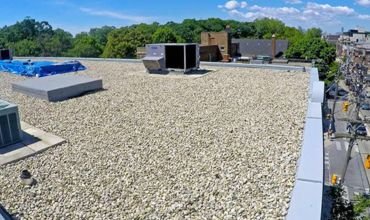
- Roof Deck Preparation
The initial step is to design a roof deck using the built-up roofing elements. You need to include repairing any damaged parts of the existing roof. However, ensure that the deck is cleaned and debris-free for the newly constructed roofs.
- Base Layer Installition
The next step involves adding a base layer within the roof deck. This layer is mainly asphalt infused with a roofing belt or fiberglass mat. A base layer acts as a subordinate water penetration barrier, providing a smooth surface for the ensuing layers.
- Hot Tar Application
Further, a hot tar is applied after the base layer gets in place. The tar is heated to its liquid state and evenly spread above the base layer. Hence, this hot tar acts as a waterproof agent, typically an adhesive for the succeeding layer of roofing felt.
- Roofing Felt Addition
Following the hot tar, another layer of roofing felt is added. The roofing felt is saturated with asphalt to make it more water-resistant. Therefore, hot tar and felt layering is done several times. For additional durability and waterproofing, two to six layers of roofing felt are usually added.
- Final Tar Layer Application
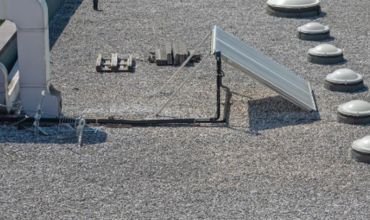
After the roofing felt is layered, a final hot tar layer is spread. This is applied over the final layer, which prepares the ground for the gravel application.
- Spreading Gravel
Finally, the last step is to expand the gravel or crushed stone layer above the tar. Gravel protects the underlying tar layers from sunlight and UV radiation. Over time, this can break down the tar, providing a better fire-resistant layer.
Types of Tar and Gravel Roofs Offered by Us
These roofs mainly come in two types, which are:
- Modified Bitumen Built-Up Roofing
This tar roof type is made when modifiers are added to the roofing asphalt. In this process, the plasticizers are replaced during the distillation process. The roof is then reinforced with polyester fiber matting or fiberglass to improve its strength and longevity. Two main Bitumen built-up roofs exist: SBS or styrene-butadiene-styrene and APP or atactic polypropylene. However, SBS helps improve the roof’s flexibility and allows it to expand and contract, while APP builds the roofing system’s ability to be solidified for a long time.
- Ballast Tar & Gravel Roofing
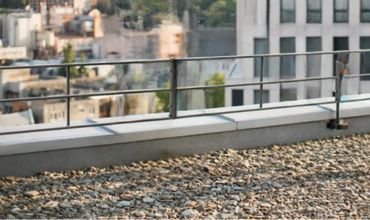
Ballast tar and gravel Roofing is considered a better choice for commercial buildings. This means that such roofing is excellent for adding an aesthetic look to the ready source of ballast structures along with the textures of the larger stones. You can use paving stones to create walkways to add extra value to your property. Ballast is used primarily with roofs of tar and gravel alternatives like thermoplastic polyolefin (TPO), single-ply flat roofs, ethylene propylene diene monomer (EPDM), and polyvinyl chloride.
The Top Advantages of Our Tar and Gravel Roofs
Tar roofs, also known as built up tar and gravel roof, are best known for their advantages, which make them an excellent roof choice. So, here are some of its top advantages:
- Longevity
These roofs are well-known for their durable nature. However, installing and maintaining them correctly to build a better life is essential. On average, the life span of tar roofs is about 25 to 30 years, and even more.
- Resistance to Water
- Tar roofs exceed expectations and exceptionally resist all weather conditions. They are highly water resistant and are an excellent choice for winters and summers. The top layer of gravel helps grant excellent protection from sun, heavy rains, and winds.
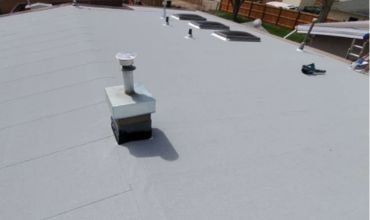
- Low Maintenance
Compared to the other roof types, tar roofs need relatively limited maintenance. However, prompt repairs and routine inspections are required to check for minor issues. The gravel layer greatly protects the lower layers and requires no frequent maintenance.
- Affordable
Above all, tar roofs and tar and gravel driveway are cost-effective compared to other roofing alternatives. The installation and long-term maintenance charges are low. Infact, this is entirely true when you consider the longevity of these roofs.
Final Verdict
This handbook about tar and gravel or BRC roofs comes to an end. You must now be sure that it would be a great idea to pick this roof and ensure complete protection. Tar roofs are amongst the best roofing solutions with minimal ManageMyRoof tar and gravel roof maintenance. You can rely on our roofing system because we offer versatility and cost-effectiveness for all weather resilience.
Commonly Asked Questions
Yes, these roofs are a good option for house roofing. They offer excellent UV protection and are also fire-resistant.
These roofs are, also known as Built-up roofs or BURs, are made by layering roofing felt, fiberglass, and asphalt.
On average, this roof lasts up to 25 years with some exceptional maintenance and even up to 40 years.
To make a gravel roof, hot tar is poured to waterproof the roof. The roofing felt is then layered with tar for extra strength.
Regular maintenance is required to improve the lifespan of these roofs. It is essential to check the roof’s gravel once a year.
Absolutely yes! It is dark and oily, with a waterproof substance that offers protection from water, sunlight, and other weather elements.
Yes. The BUR roofs are designed to withstand foot traffic and are covered with crushed stone.
A roofing tear-off shovel, pry bar, and carbide roofing cutter are necessary to remove a roof effectively.
You can replace the tar roofs between 20 years and 25 years.
To find a leak in the tar roof, you need to walk around the roof and look for any areas with missing gravel. Infact, exposed roof areas might have cracks and dried bubbles, a significant source of leaks.

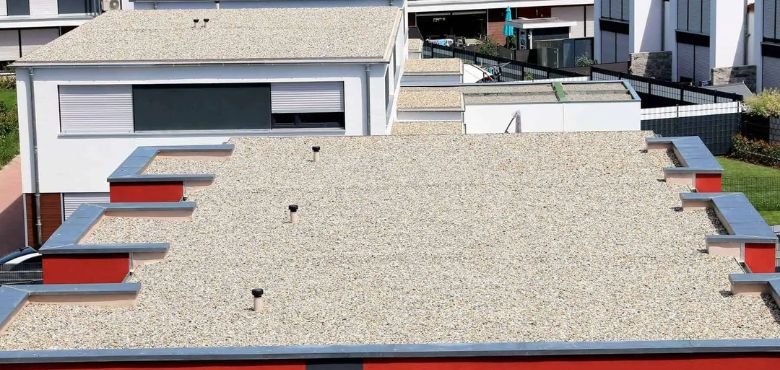
Leave a Reply